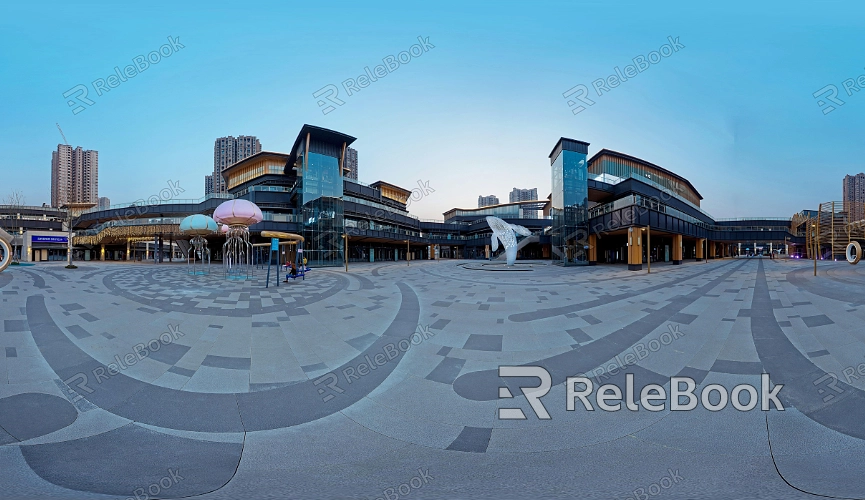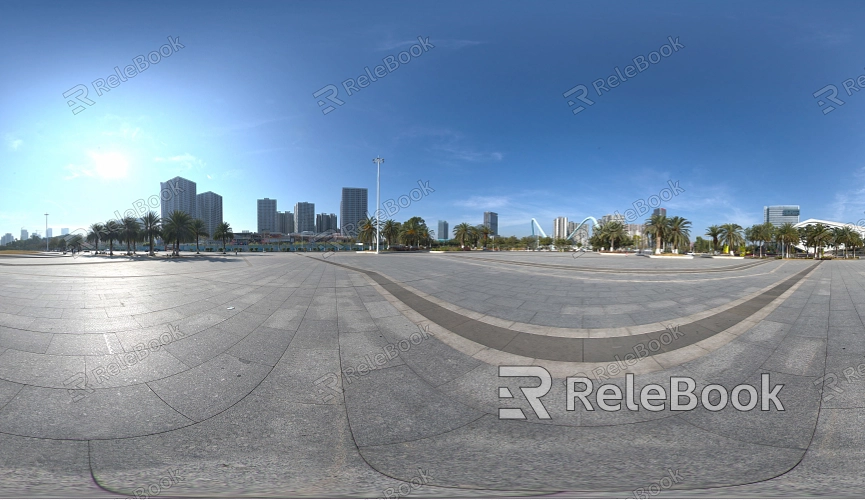What Is the Difference Between SDR and HDR
In the field of 3D modeling and rendering, choosing the right type of image can significantly impact the quality of your scene. SDR (Standard Dynamic Range) and HDR (High Dynamic Range) differ notably in how they handle brightness, contrast, and color representation, which can directly influence the final render's quality. This article explores the key differences between SDR and HDR, as well as their applications in 3D software.

1. Differences in Dynamic Range
Dynamic range refers to the spectrum between the brightest and darkest parts of an image.
SDR (Standard Dynamic Range): SDR images have a narrower dynamic range, which often fails to capture all the details in both highlights and shadows. This means that in scenes with extreme brightness or darkness, SDR images might suffer from lost details, overexposure, or underexposure. In 3D modeling software like Blender or 3ds Max, SDR-rendered images are typically suitable for scenes that don’t require a high level of brightness contrast.
HDR (High Dynamic Range): In contrast, HDR technology offers a much wider dynamic range, enabling images to retain details in both the brightest and darkest areas simultaneously. HDR excels in scenarios with complex lighting conditions or high-contrast scenes. In software like Cinema 4D or Maya, HDR rendering can produce more lifelike images, particularly when simulating real-world lighting effects.
2. Differences in Color Representation
Color rendering is another crucial distinction.
SDR: SDR images use a relatively limited color gamut, often confined to the Rec. 709 standard. This can result in less vibrant colors and noticeable color banding when displaying vivid hues or subtle color transitions.
HDR: HDR images, on the other hand, use a broader color gamut, such as the Rec. 2020 standard, allowing for a richer color palette and more accurate color gradations. HDR is particularly valuable when working with color-intensive scenes or projects that demand high color fidelity. For example, when rendering natural landscapes or complex textures, HDR can better capture the subtle variations and rich layers of color.
3. Impact on the Rendering Process
SDR and HDR also affect the rendering workflow differently.
SDR Rendering: Given the limitations in dynamic range and color gamut, SDR rendering is relatively straightforward and less resource-intensive. This makes SDR ideal for quick previews or projects with limited computational resources. Designers might use SDR in Blender for initial renders to quickly achieve results.
HDR Rendering: HDR rendering requires more computational power due to the need to handle a broader dynamic range and color gamut. This often translates to longer render times and higher hardware requirements. When using HDR rendering, designers must consider hardware capabilities and rendering time, especially for large, complex scenes. For instance, in architectural visualization projects, HDR rendering can significantly enhance image quality but demands more robust computing power.

4. Compatibility with Display Devices
The type of display device also plays a role in how SDR and HDR content is viewed.
SDR Displays: Most traditional monitors only support SDR content. This means that even if a high-quality HDR image is rendered, it won’t fully showcase its details and color depth on an SDR display.
HDR Displays: HDR monitors can fully display the rich details and vibrant colors of HDR images, providing a more immersive and realistic visual experience. For projects that require high-quality renders, such as virtual reality, film production, or advanced architectural visualization, using an HDR display for the final presentation is essential.
5. Different Use Cases
SDR and HDR shine in different scenarios.
SDR: SDR is suitable for most standard applications, such as web design, basic product visualization, and quick rendering tasks. In these cases, dynamic range and color performance may not be the top priority, and SDR can meet the demands.
HDR: HDR is better suited for scenes requiring high realism and complex lighting conditions, such as architectural visualization, game development, film production, and virtual reality. In these applications, HDR’s broad dynamic range and rich color representation can significantly enhance the visual quality and realism of the images.
6. Impact on Render Output
The impact of SDR and HDR on the final render output is also worth noting.
SDR Output: SDR output is typically used for standard-resolution and color-depth display devices. Even if advanced lighting and materials are used during the rendering process, the final image won’t fully showcase these details on an SDR device.
HDR Output: HDR output is designed for high-resolution and high-color-depth displays, capable of showing richer image details and realism. When rendering high-end product displays or projects that require complex lighting effects, HDR output is the ideal choice.
Understanding the differences between SDR and HDR is crucial for 3D modeling and rendering designers. Selecting the appropriate image display technology based on the project’s needs and goals can significantly improve the quality of the final work. If you're looking for high-quality HDR images, 3D textures, SketchUp models, or 3ds Max models, Relebook offers a wide variety of options to help you achieve outstanding visual results.

